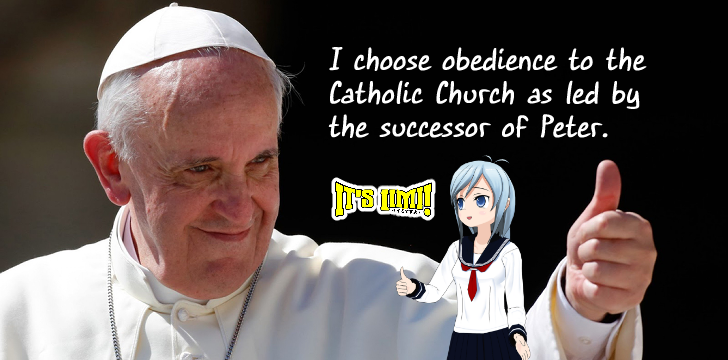Introduction
The Washington Post has a rather asinine article about the issue of religious freedom and posting offensive objects under religious freedom under the First Amendment.
The idea of a Satanic monument to be next to a display of the Ten Commandments may, at first glance, seem to be a reductio ad absurdum to the defense of the Ten Commandments being displayed. After all, isn't it favoritism to allow one religious display, but not another?
Preliminary Notes
Now, for purposes of this article, I'll leave out the repugnance of Satanism as a man made religion which is an express repudiation of Christianity. I'll also leave out the consideration of Christianity having any special rights because it is the true religion.
While I both believe Catholic Christianity is the true religion and Satanism is offensive and a lie, the focus here is about freedom of religion in general and the all or nothing view of the judiciary.
The Principal Problem
I think the problem is the courts commit the fallacy of equivocation. They take the concept of religious freedom with different meanings, when it needs to keep a consistent meaning.
The freedom of religion involves the right of the individual to seek out and follow God according to their conscience without interference from the state, either by mandating the attendance in one religion (an official state Church like Anglicanism in Elizabethian England) or by restricting a religion from functioning (like the Soviet Union).
However, the freedom of religion does not mean an approach of either all get the same amount of attention in the public sphere or none do.
Distinguishing Protection of a Minority from Suppression of a Majority
Law has had an emphasis on protecting the rights of a minority from the tyranny of the majority. This is a good concept when properly understood. We recognize it is unjust to mistreat a minority and restrict them from practicing the rights all people possess.
Unfortunately, the judiciary seems to take a view that if we can't give all religions the same weight, we can't allow any of them to have a public presence. It ignores the fact that the majority of Americans do have a shared religious culture and heritage and tries to pretend it doesn't exist.
America tends to get bizarre here by forgetting a sense of proportion. The percentage of Christians in America is about 78.4%. The next largest religion is Judaism (1.7%). Islam is 0.6%. While 16.1% is unaffiliated with religion, only 1.6% are atheists.
Now while not all people who profess Christianity actually practice it, it does mean that the influence of Christianity plays a large role in how many Americans view life. The Cross, the Ten Commandments... these are things which are meaningful to the vast majority of Americans. For example, even to nominal Christians, the Ten Commandments have meaning in terms of law and justice.
The Abundance of Christian Symbols is not Infringement of Religious Rights of a Minority
Now, the 78.4% of Americans who recognize Christianity as true would do wrong to suppress the human rights of 21.6% of the population who don't.
But suppression of religious rights involves either the forcing actions which the believer finds condemned by their conscience or forbidding actions the believer feels morally obligated to do. For example, the Obamacare Contraception Mandate involves the forcing of funding contraceptives and abortifacients by people whose conscience forbids them from doing so.
It doesn't mean that symbols of a religion consisting of 0.6% (Islam) of the US population has to be as visible as the symbols of a religion consisting of 78.4% or else it is discrimination. Nor does it mean that the 1.6% of the population that is atheist has the right to suppress the existence of religion in the public sphere because they deny the Divine exists.
Trolling and Harassment
Another consideration is that when a group puts up a counter monument for the purpose of showing their disagreement with the Christian symbol, this is not an issue of religious freedom for the countering group. It is an issue of harassment. The original Christian monument is not put up for the purpose of propaganda. But the counter monument is. Belief in the Divine is a delusion! these monuments proclaim. Don't believe in Christianity, believe in us! they say.
But the War Memorial built in the shape of the Cross is not made to promote Christianity. It exists as a prayer for the war dead, remembering the salvation Christ died and rose to bring us.
Now, some don't believe that Christ was anything more than a man. But to take offense in the hope and prayers that the war dead may rest in God and demand the removal is not an action of religious freedom. It's an act of religious oppression, saying "I disagree with Christianity. So take it down!"
Conclusion
The problem with the legislature and the courts is they begin with a faulty assumption... that any religious symbol on public land counts as the establishment of a religion. But in accepting the demands that no religious symbol exist on public land actually favors the establishment of atheism. The accepting of demands to establish a monument that exists for the purpose of rejecting a religion when the original monument has no propaganda intent actually establishes a religious harassment as a right.
A government which wants to respect the rights of the freedom of religion needs to consider these things. It ought to distinguish intent instead of blindly taking a one size fits all approach without considering whether the appeal is done for a legitimate redress or for harassment.


